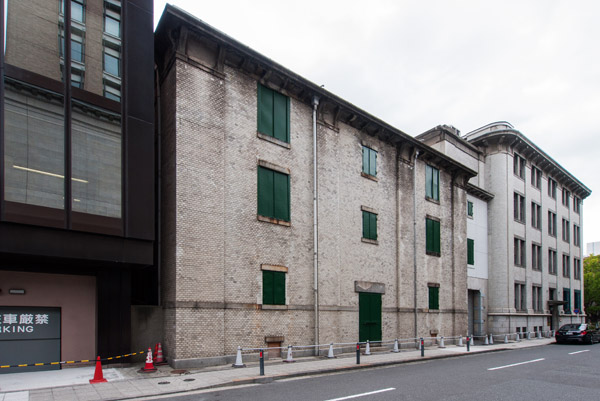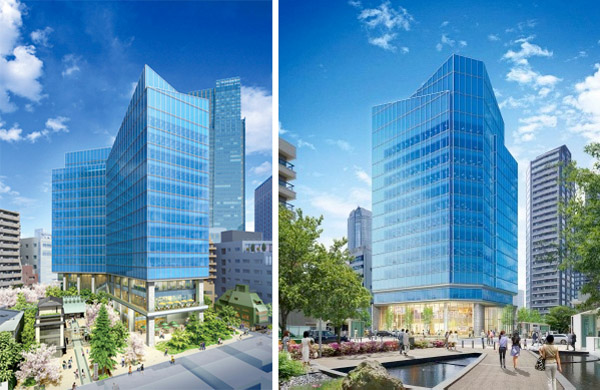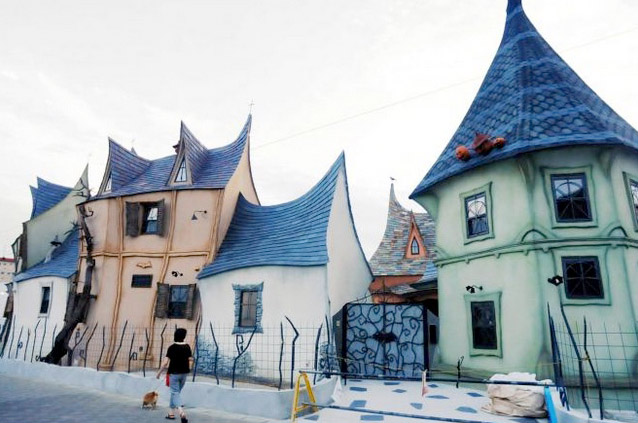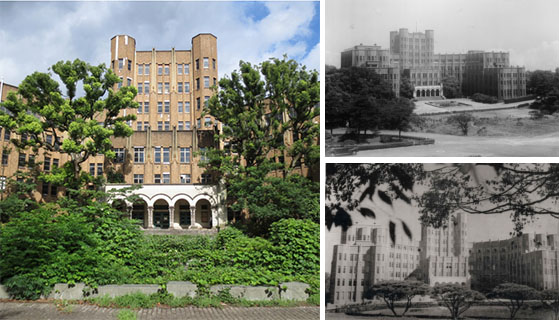Hope fades for historic Yokohama warehouse as demolition begins
November 7, 2014Yokohama,Historic properties in JapanDemolition,Historic Properties,Real Estate News,Redevelopment & Reconstruction,All

Despite the best efforts of architects and historians from across the country, the owner of the Former Mitsui Bussan Yokohama Warehouse in downtown Yokohama is pushing ahead with demolition.
On November 5, a notice was posted outside the 104-year old building indicating the start of demolition. The building will be completely razed by mid-February 2015. The owner, Tokyo-based real estate and expat leasing company Ken Corporation, has ignored pleas from various preservation groups.
The Former Mitsui Bussan Yokohama Warehouse was designed by Oto Endo and built in 1910. Endo was a pioneer in designing reinforced-concrete buildings and this was one of the earliest structures in Japan to incorporate RC in the construction. He also designed the adjoining Mitsui Bussan Yokohama Office Building in 1911, which was the first building in the country to be built entirely out of reinforced concrete. The two buildings formed an important part of Yokohama’s silk trade, and the warehouse was used for the storage of silk.
High-rise office and apartments for Takeshiba
November 6, 2014Minato-ku,TakeshibaNew Construction,Office/Retail News & Information,Real Estate News,Redevelopment & Reconstruction,All,Tokyo

On October 29, Tokyo Land and Kajima Corporation announced plans for high-rise office and residential buildings in the waterfront Takeshiba area in Minato-ku. The project will also provide facilities for trade and content promotion and international expansion. JR Hamamatsucho and Takeshiba Station will be connected via a 500 meter long pedestrian bridge.
The project is expected to be completed in 2019.Read more
Pembroke’s latest project in Roppongi
November 5, 2014RoppongiNew Construction,Office/Retail News & Information,Real Estate News,All,Tokyo

Pembroke Real Estate Japan have started the construction of a 14-storey office building in located across the street from Tokyo Midtown in Roppongi 7 Chome. Try-Seven Roppongi is scheduled for completion in 2016. The exterior was designed by Jun Mitsui & Associates Architects.
A shrine and shrine office on an adjoining 876 sqm block of land will also be redeveloped in conjunction with Try-Seven.
This is the fourth development for Pembroke. In 2002 they developed Hikawa Gardens, a rental apartment building in Akasaka, and in 2010 they completed Azabu Gardens, a luxury expat rental building near Roppongi Hills.
Sources:
The Asahi Shimbun, October 28, 2014.
The Daily Engineering & Construction News, October 29, 2014.
Former Governor’s Residence in Shoto up for sale again
November 4, 2014Shoto,Shoto Real Estate,Shibuya Real EstateReal Estate News,All,Tokyo

The former official residence of the Governor of Tokyo in Shoto, Shibuya-ku, is going back on the market next month with a minimum bid price set at 3.51 billion Yen. This is the third time the property has been listed for sale, but is the first time that bidding is open to the general public. Previous attempts were limited to foreign governments looking for embassy locations.
It was originally listed in 2008 with a minimum bid set at 4.8 billion Yen. It was listed again in 2013 seeking offers over 3.3 billion Yen.
Applications for bidding will be open from December 15 ~ 19, with bids to be submitted and opened on December 24, 2014. The successful bidder must be prepared to complete settlement by March 23, 2015.
Tokyo apartment sales in October 2014
November 3, 2014Market Information,All,Tokyo

The following is a selection of apartments that were sold in central Tokyo during the month of October 2014:Read more
Witch’s House in Hamamatsu

Hamamatsu City can soon look forward to celebrating Halloween all year round as a spooky block of rental apartments nears completion.
The landlord, an avid collector of Halloween goods, wanted to design something that was fun not only for the occupants but also for anyone passing by. "Witch's House' has a uniquely warped exterior adorned with pumpkins, bats and crows. The apartments were designed and built by local builder Nukumori Workshop. This isn’t their first unusual project - they have built a number of Storybook style homes, shops and restaurants. Most of their clients are in their 50s and 60s.Read more
Shirokanedai Institute of Public Health (c1938) to be restored
October 30, 2014Shirokanedai,Historic properties in Japan,The Institute of Public Health,Yoshikazu Uchida (Architect)Historic Properties,Redevelopment & Reconstruction,All,Tokyo

The historic Institute of Public Health building in Shirokanedai, Minato-ku, Tokyo is going to be restored and converted into a centre for palliative care for cancer patients, a children’s club and short-term child care facility.
The Institute was built in 1938 as a medical training and research centre. The 76-year old building has a total floor space of 15,000 sqm with two basement floors, five floors above ground and a 3-storey tower. It was designed by architect and engineer Yoshikazu Uchida. Uchida designed a number of buildings for the University of Tokyo and also worked on the design of the Dojunkai Apartment buildings across Tokyo and Kanagawa Prefecture. His style became known as ‘Uchida Gothic’.Read more
